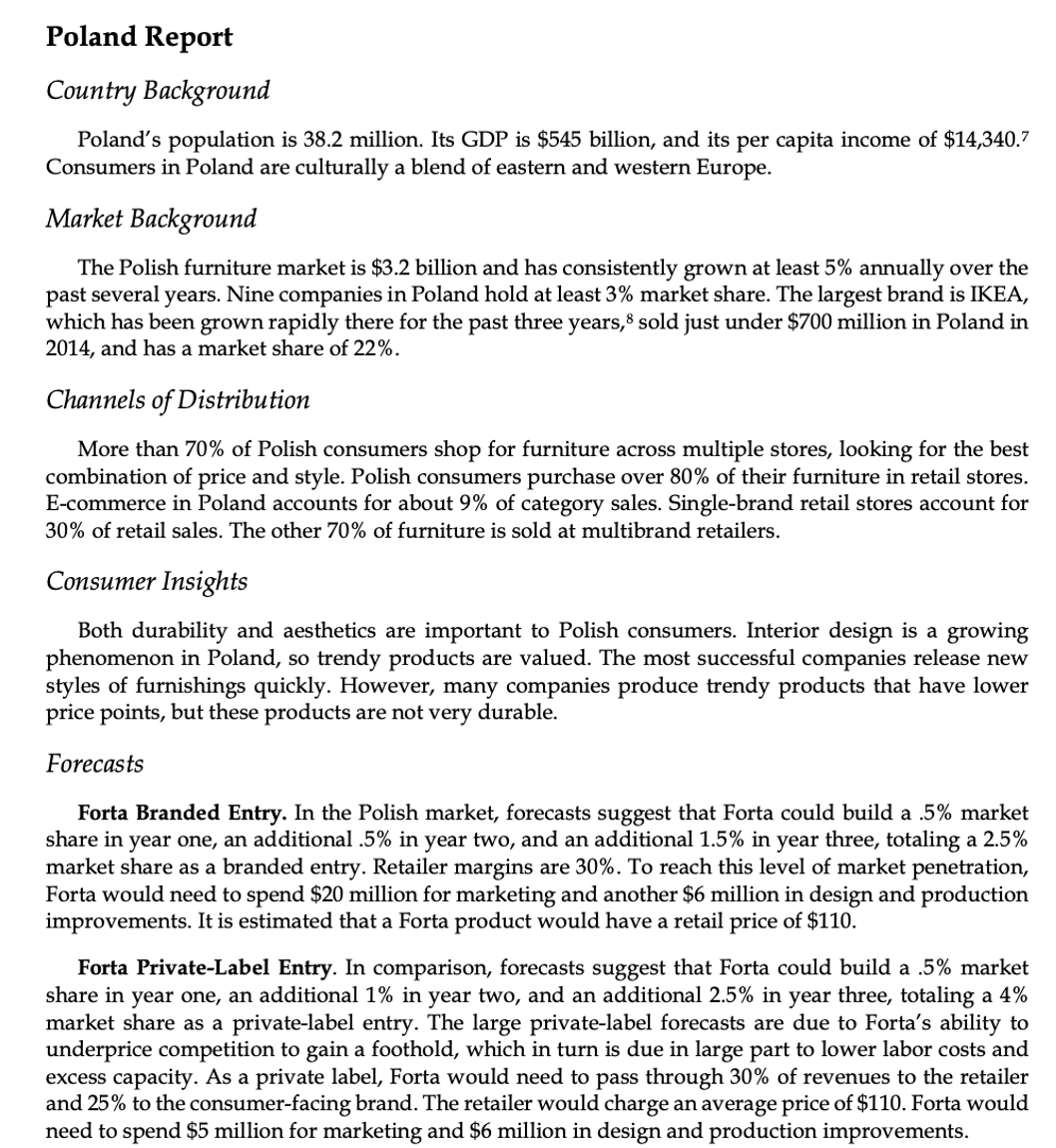Integrating PETSEL insights , write a pargraph on the summary of facts of the Poland situation, summarizing Poland's furniture market, e-commerce trends, environmental factors and Poland's GDP and consumer spending habits.
Integrating PETSEL insights , write a pargraph on the summary of facts of the Poland situation, summarizing Poland's furniture market, e-commerce trends, environmental factors and Poland's GDP and consumer spending habits.
Chapter14: Marketing Channels And Supply Chain Management
Section14.1: Taza Cultivates Channel Relationships With Chocolate
Problem 1VC
Related questions
Question
Integrating PETSEL insights , write a pargraph on the summary of facts of the Poland situation, summarizing Poland's furniture market, e-commerce trends, environmental factors and Poland's GDP and consumer spending habits.

Transcribed Image Text:Poland Report
Country Background
Poland's population is 38.2 million. Its GDP is $545 billion, and its per capita income of $14,340.7
Consumers in Poland are culturally a blend of eastern and western Europe.
Market Background
The Polish furniture market is $3.2 billion and has consistently grown at least 5% annually over the
past several years. Nine companies in Poland hold at least 3% market share. The largest brand is IKEA,
which has been grown rapidly there for the past three years,8 sold just under $700 million in Poland in
2014, and has a market share of 22%.
Channels of Distribution
More than 70% of Polish consumers shop for furniture across multiple stores, looking for the best
combination of price and style. Polish consumers purchase over 80% of their furniture in retail stores.
E-commerce in Poland accounts for about 9% of category sales. Single-brand retail stores account for
30% of retail sales. The other 70% of furniture is sold at multibrand retailers.
Consumer Insights
Both durability and aesthetics are important to Polish consumers. Interior design is a growing
phenomenon in Poland, so trendy products are valued. The most successful companies release new
styles of furnishings quickly. However, many companies produce trendy products that have lower
price points, but these products are not very durable.
Forecasts
Forta Branded Entry. In the Polish market, forecasts suggest that Forta could build a .5% market
share in year one, an additional .5% in year two, and an additional 1.5% in year three, totaling a 2.5%
market share as a branded entry. Retailer margins are 30%. To reach this level of market penetration,
Forta would need to spend $20 million for marketing and another $6 million in design and production
improvements. It is estimated that a Forta product would have a retail price of $110.
Forta Private-Label Entry. In comparison, forecasts suggest that Forta could build a .5% market
share in year one, an additional 1% in year two, and an additional 2.5% in year three, totaling a 4%
market share as a private-label entry. The large private-label forecasts are due to Forta's ability to
underprice competition to gain a foothold, which in turn is due in large part to lower labor costs and
excess capacity. As a private label, Forta would need to pass through 30% of revenues to the retailer
and 25% to the consumer-facing brand. The retailer would charge an average price of $110. Forta would
need to spend $5 million for marketing and $6 million in design and production improvements.
Expert Solution
This question has been solved!
Explore an expertly crafted, step-by-step solution for a thorough understanding of key concepts.
Step by step
Solved in 3 steps

Recommended textbooks for you

